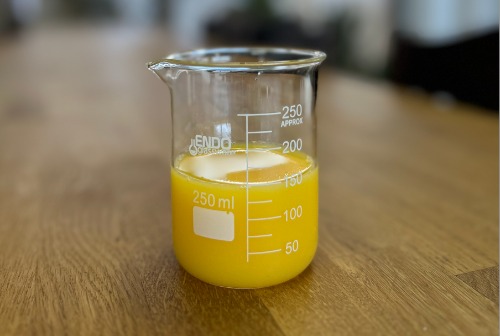22 Oct Orange juice and concentrate prices ease as global demand slows
In recent months, the international orange juice market has shown a clear shift in trend. After the record price peaks of 2023 and 2024—driven by fruit shortages and the effects of citrus greening—2025 is marked by a global drop in consumption and a significant correction in concentrate prices.
Over the past year, FCOJ (Frozen Concentrated Orange Juice) futures have fallen by more than 60%, dropping from levels equivalent to €8/kg to around €3.5/kg. The main reason is not a massive recovery in supply, but rather weaker demand across both retail and industrial channels.
In Europe and the United States, orange juice sales have declined between 15% and 25%, affected by food inflation, competition from new functional beverages, and a growing perception that traditional juice contains too much sugar.
At the same time, the sensory profile of the product has suffered from climatic stress in producing regions, resulting in juices that are more bitter and less balanced. Although less evident in statistics, this has impacted consumer loyalty and reduced the product’s appeal compared to other beverage categories.

Regarding production, the 2025/26 Brazilian orange crop, which accounts for nearly 70% of the global supply for the juice industry, is estimated at 306.7 million boxes of 40.8 kg. This represents an improvement over the 233 million boxes of the previous year, though it still remains below the historical average range of 350–370 million boxes, considered necessary to maintain stable and contained juice prices.
Even though the previous season ended with warehouses practically empty of juice and concentrate, the increase in Brazil’s production has coincided with weak demand, creating a relative surplus that has accelerated the decline in international prices.
However, the situation is not without risks. Citrus greening continues to spread: in 2025, the disease already affects 47.6% of the trees in Brazil’s citrus belt. This constrains the sector’s structural recovery and keeps price volatility high for the coming years.
At Baor Products, we see this new phase of the market as bringing both risks and opportunities. Lower prices can ease industrial sourcing costs, but they also call for more flexible strategies—both in formulation and procurement planning.
Diversification into multifruit blends, stock optimization, and forward contracting will be key to maintaining competitiveness in a market now seeking stability after two years of extreme tension.
We may be entering a temporary rebalancing phase: while more fruit is available and consumption remains low, the underlying phytosanitary risk suggests that prices could rise again within a few months if demand rebounds.





Sorry, the comment form is closed at this time.